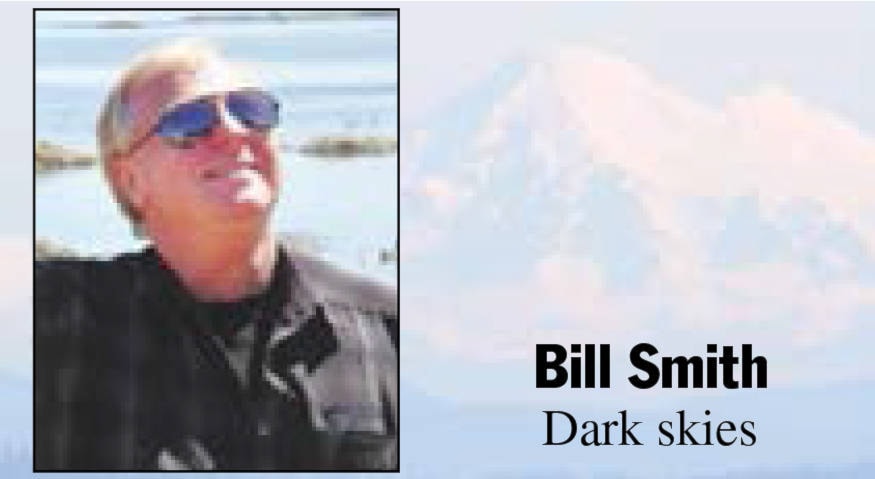What’s Up for September 2017 ? Set your sights beyond the solar system and take a late summertime road trip along the Milky Way.
Over the next few days, a huge asteroid known as 3122 Florence will travels roughly south to north, crossing through the constellations Capricornus, Aquarius, Delphinus, Vulpecula, and Cygnus.
On Sept. 15 the Cassini spacecraft ends its glorious Saturnian science tour by plunging into the atmosphere of Saturn, becoming forever a part of the ringed planet.
The waning days of summer are upon us, and the sun sets earlier, revealing the starry sky bisected by the Milky Way.
This month Saturn is the only prominent evening planet low in the southwest sky over Metchosin. Look for it near the constellation Sagittarius.
Above and below Saturn – from a dark sky – you can’t miss the summer Milky Way spanning the sky from Vancouver in the northeast to Sooke in the southwest.
Grab a pair of binoculars and scan the teapot-shaped Sagittarius, where stars and some brighter clumps appear as steam from the teapot. Those bright clumps are near the center of our galaxy, which is full of gas, dust and stars.
Directly overhead is the great Summer Triangle of stars. Vega, Altair and Deneb are in the pretty constellations Lyra, Aquila and Cygnus.
Cygnus the Swan is where the Kepler telescope focused its search for exoplanets. For a long time I wondered why it was pointing in this direction. Then I finally realized it was pointing along the plane of the galaxy along a spiral arm where the density of stars was high – but not directly at the centre of the galaxy. It was a good choice.
As you gaze toward the northeast you’ll see Cassiopeia, the familiar W-shaped constellation…and Perseus. Through your binoculars, look for the Perseus Double Cluster. Both of the clusters are visible with the naked eye, are 7500 light years away, and contain more than 300 blue-white super-giant stars.
Every star and every object you can see with your unaided eye is part of the Milky Way Galaxy. With one exception: the great Andromeda galaxy, which is faintly visible through binoculars on the opposite side of the night sky from Saturn and the teapot.
So in general stars are seen inside our galaxy along the plane of the Milky way. Whereas “stars” outside this plane, are nearly all in fact complete galaxies so much farther away.
As Earth spins daily on its axis, the stars and galaxies, and even the whole milky way, appear to rotate in circular paths around the north pole.
As a reminder the planets, plus the SUN and Moon, do not move this way. They rise in the east and set in the west moving along the ecliptic arch – what we call the Salish Walk of the Planets.
Dark Skies to all friends of Cattle Point Star Park.
Summary is from the transcript of “What’s Up in September 2017” by NASA announcer and astronomer Jane Houston Jones with specific permission for localization to Cattle Point Dark Sky Urban Star Park and the Oak Bay News. You can subscribe to her weekly blog at solarsystem.nasa.gov/news/category/10things.



